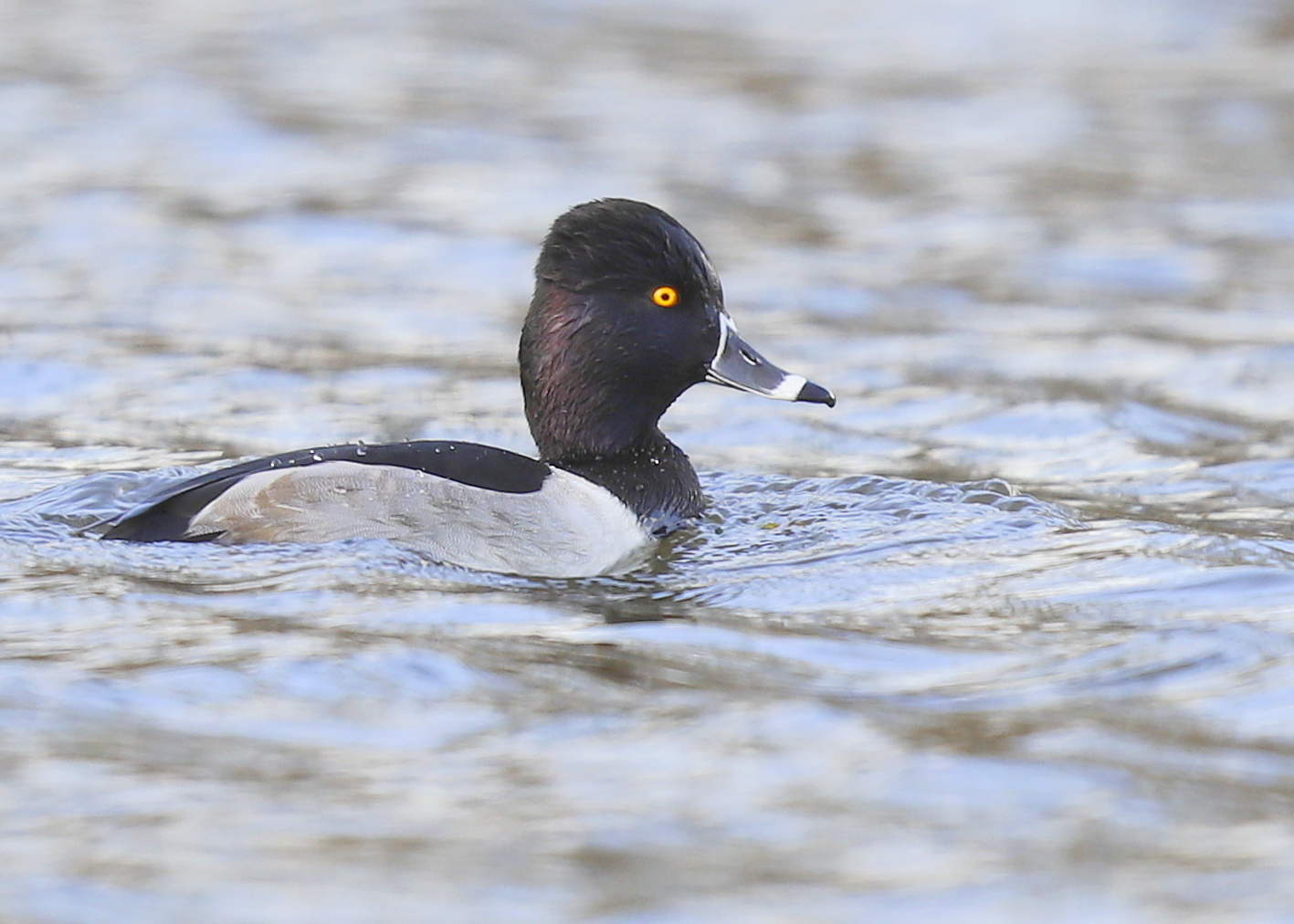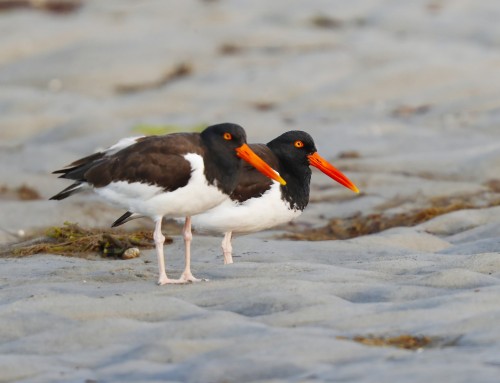Dec. 8, 2023: The Ring-necked Duck, a medium-sized diving duck, has distinctive field marks during the winter in Falmouth. Males have a black back and light gray flanks with an upward spur, yellow eyes, and blue-gray bill with a black tip. Their diving behavior distinguishes them from dabbling ducks. This Ring-necked Duck was recently seen in a small diving group in the very northeast corner of Shiverick’s Pond by the Mullen-Hall School.
The Ring-necked Duck (Aythya collaris) is a medium-sized diving duck that can be found in North America. During the winter months on Cape Cod, Ring-necked Ducks often display distinctive field marks that help in their identification. Here are some key features to look for:
1. Size and Shape:
– Ring-necked Ducks are medium-sized ducks with a compact, rounded shape.
– They have a relatively short neck and a slightly peaked head.
2. Plumage:
– Males (drakes) have striking plumage. Look for a glossy blackish-purple head with a noticeable white ring around the neck, although this ring is often difficult to see in the field.
– The body is mostly dark gray with blackish back and sides.
– The bill is blue-gray with a white ring near the tip.
3. Eye:
– The eyes of both males and females are yellow.
4. Bill:
– The bill of the Ring-necked Duck is distinctive. It’s relatively short and stubby with a white ring near the tip, making it stand out against the dark plumage.
5. Body Markings:
– The body of the Ring-necked Duck is generally dark, but the sides and flanks can have subtle grayish markings.
– Females have a brownish head and a more subdued appearance overall. They lack the strong white ring around the neck that males exhibit.
6. Undertail Coverts:
– Look for the white undertail coverts, which can be visible in flight.
7. Behavior:
– Ring-necked Ducks are diving ducks, so they may frequently dive underwater to feed. This behavior can help distinguish them from dabbling ducks that feed by tipping forward in the water.
Remember that field marks can vary, and lighting conditions can affect the perceived colors. Observing multiple features and behaviors will contribute to a more accurate identification. A good field guide, like SIBLEY GUIDE TO BIRDS, can be a valuable resource for birdwatching on Cape Cod.





Leave A Comment
You must be logged in to post a comment.